Watermelon peperomia plants, with their beautiful and unique leaves, make lovely houseplants.
However, there are a bunch of things that you have to know if you want your watermelon peperomia to grow as beautiful and as healthy as possible, and we’re more than happy to help!
In this article, we’ll discuss the best soil mix for watermelon peperomia plants, their watering and lighting needs, and how often to prune and repot them. We’ll even help you address some problems that you may face while growing one!
Watermelon Peperomia General Information
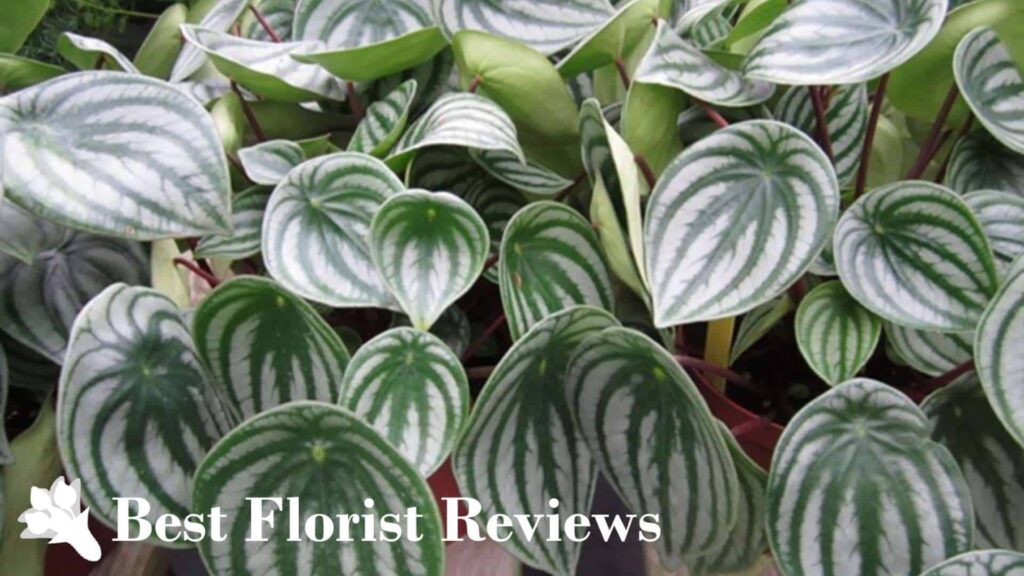

Scientific Name: Pilea argyreia
Common Name: Watermelon peperomia, watermelon begonia
Genus: Peperomia
Family: Piperaceae
Plant Type: Perennial plant
Native Habitat: South America
Preferred Environment: Warm and slightly humid
Blooming Period: Spring and summer
Mature Size: 6 to 12 inches tall
Toxicity: Non-toxic to humans and pets
Watermelon peperomia, scientifically known as Pilea argyreia, is a species of perennial plant from the Peperomia genus of the Piperaceae family. It’s a popular houseplant that’s native to South America, particularly Brazil, Bolivia, Ecuador, and Venezuela.
Despite the similar name, watermelon peperomia is not botanically related to watermelons and begonias. They all belong to different plant families and genera.
The watermelon peperomia earned its common name due to its leaf patterns, which resemble the rind of a watermelon.
Watermelon peperomia usually blooms during spring and summer, but the flowers are typically tiny and almost insignificant. They grow in the upright spike that emerges from the plant and only last for a few days.
Rather than its flowers, watermelon peperomia’s charm lies in its attractive foliage.
To take care of the plant’s stunning leaves, it’s important to keep them in a warm, humid environment and keep in mind all the care tips we’ll discuss here.
Taking Care of Watermelon Peperomia
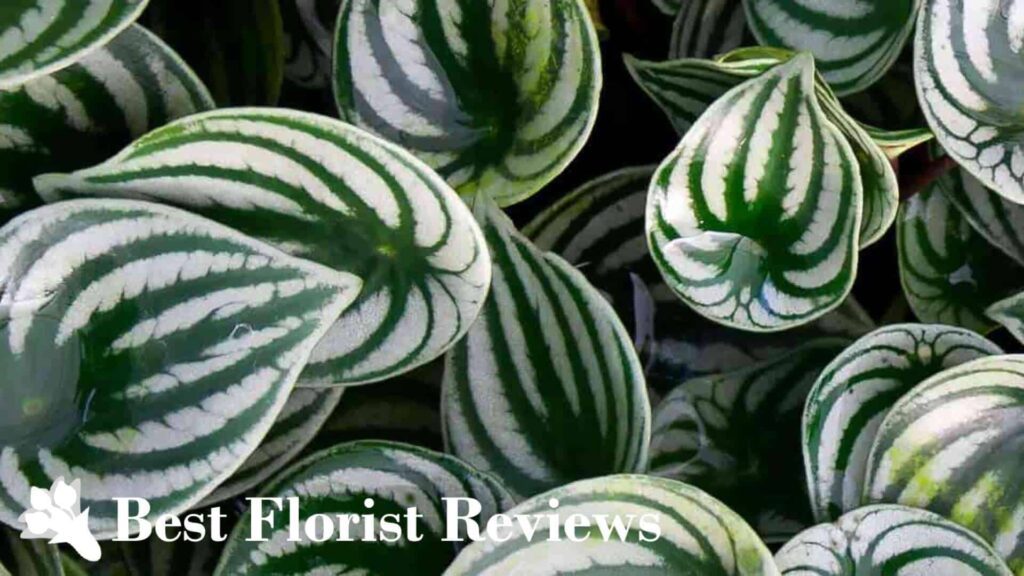

Watermelon peperomia is easy to grow and doesn’t require a lot of maintenance. As long as they receive full sunlight, sufficient moisture and are planted in a rich, well-draining soil, they’ll survive.
Here’s a more detailed discussion of the things you need to keep in mind when taking care of watermelon peperomia:
Soil
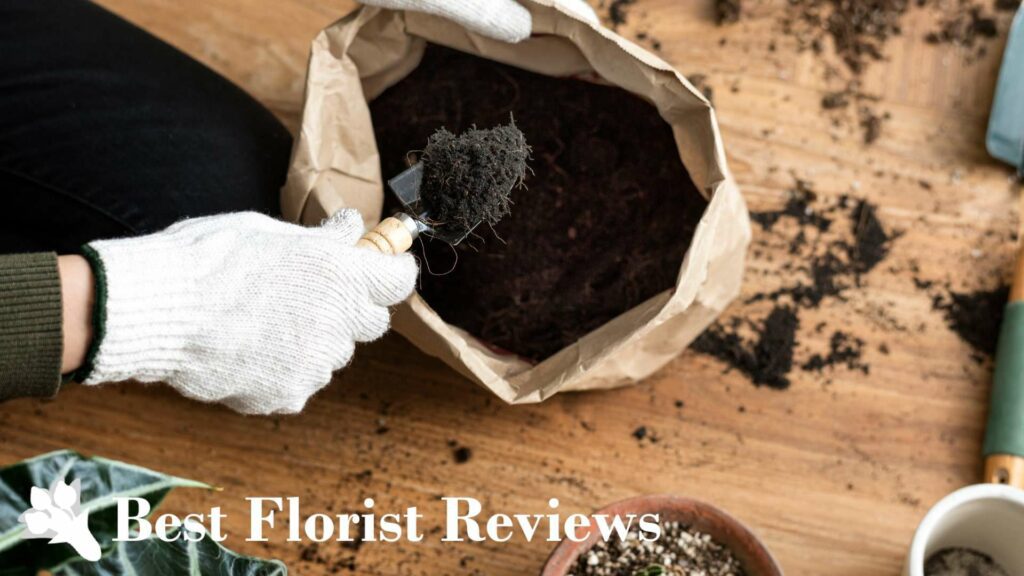

Watermelon peperomia thrives in airy, well-draining soil that can hold a sufficient amount of moisture.
It’s also ideal to use slightly acidic soil. A pH level of about 6 to 6.6 should be enough for a watermelon peperomia.
A pH level that’s significantly lower than 6 can provide too much aluminum and manganese to the plant, which can cause damage to the roots.
Watermelon peperomia can survive in almost all standard and commercial soils, so you can just buy one of them if you don’t want to create your own mix.
Just avoid those soils specially made for plants like succulents that prefer dry environments. Although well-draining, they usually don’t have the capacity to retain the moisture watermelon peperomia needs.
How to make my own soil mix for watermelon peperomia?
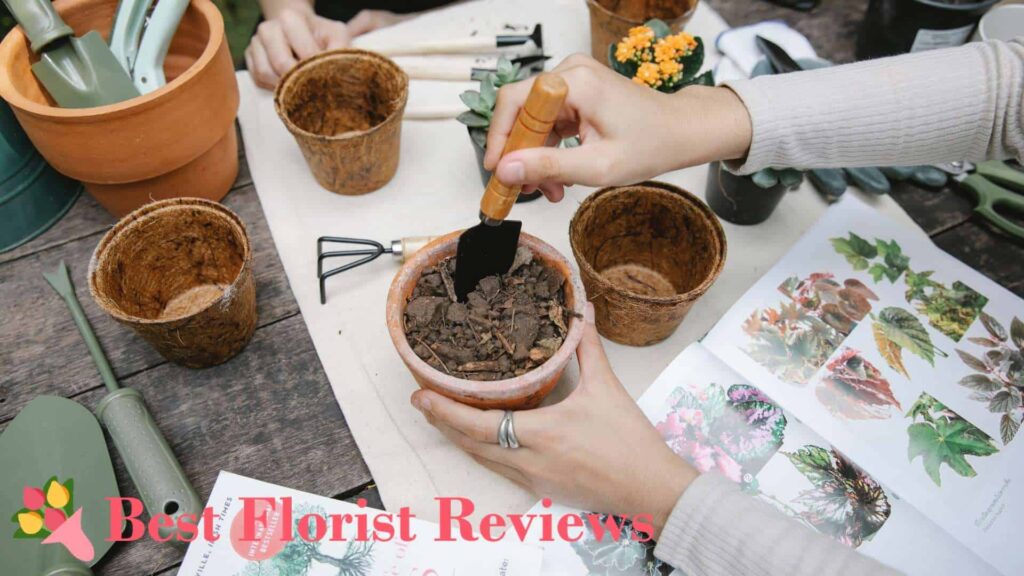

Since watermelon peperomia likes well-draining soils with good moisture retention capacity, it’s best to add ingredients like coco coir, perlite, vermiculite, and vermicompost to make your own soil mix.
Coco coir has excellent moisture retention properties, which is essential for watermelon peperomia soil. It’s also lightweight and porous, so it’s helpful in maintaining good airflow in the roots area.
Perlite, on the other hand, improves the soil’s draining capacity. It’s naturally porous, so it lets water drain better, and it helps reduce the chances of overwatering.
Vermiculite has both draining and water retention capacity, so it’s a popular ingredient for many soil mixes.
Vermicompost is an organic material that can provide nutrients to the soil and, consequently, to the plant.
If you have orchid bark and activated charcoal at home, they also make great ingredients for a soil mix. Orchid bark helps improve drainage and avoid soil compaction, while activated charcoal can help fight against insects and pests.
Here are some recipes you can follow for your watermelon peperomia:
Recipe 1
- ⅓ perlite
- ⅓ vermicompost
- ⅓ coco coir
Recipe 2
- 30% potting soil
- 40% vermiculite
- 30% coco coir
Recipe 3
- 10% potting soil
- 25% orchid bark
- 25% coco coir
- 25% perlite
- 10% vermicompost or worm casting
- 5% activated charcoal
Watering
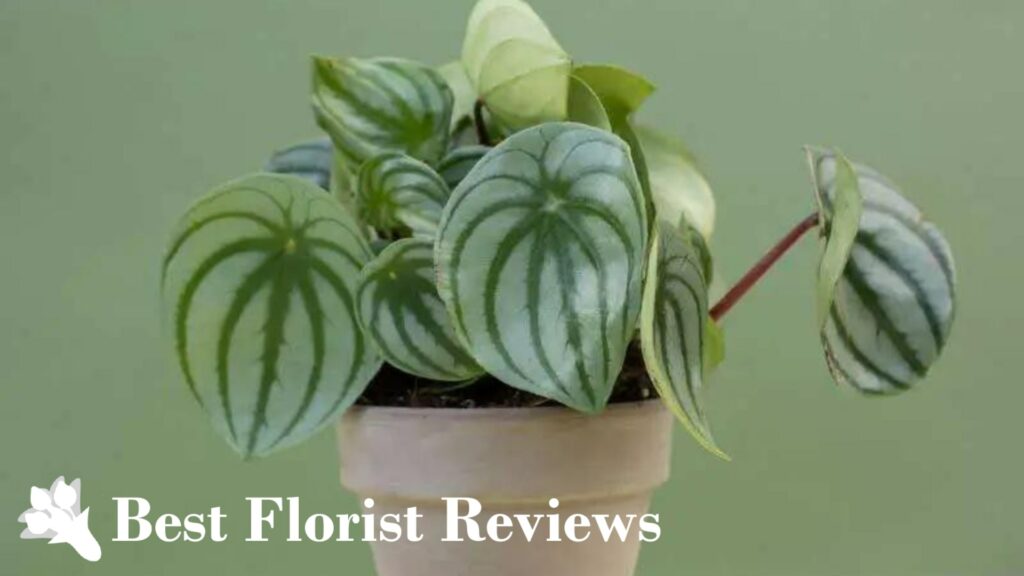

Watermelon peperomia is susceptible to overwatering and root rot, so it’s best to let the soil dry a bit before watering it again.
That said, it’s important to not let the soil completely dry, as it can still suffer from underwatering.
Watermelon Peperomia prefers its soil to be slightly moist, but it’s not fond of constantly wet soil. That’s why it’s best to allow the top one or two inches of the soil to dry out before watering.
During summer, your watermelon peperomia may need watering every 1 to 3 weeks. It will be significantly less in winter, as they tend to go through a dormant period during this season.
Watering the plant every 3 to 5 weeks during winter should suffice.
Sunlight
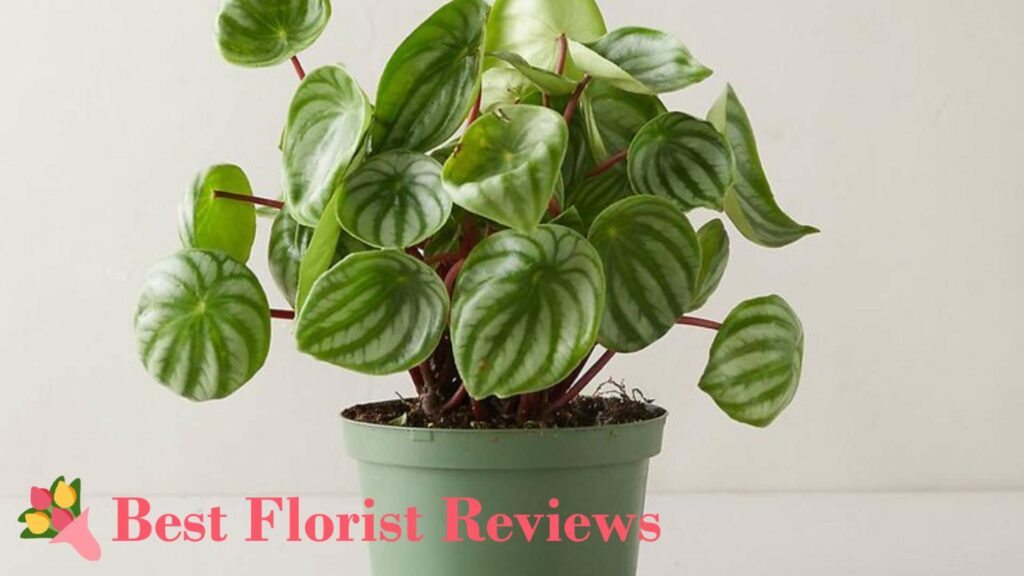

Watermelon peperomia should be placed in an area that receives bright, indirect light for at least four hours a day.
This could be near a window with a sheer curtain or in a spot where it receives bright ambient light without being exposed to direct sunlight.
These plants are sensitive to harsh, direct sunlight. In fact, prolonged exposure to strong, direct sunlight may even kill the plants due to stress and leaf scorching.
Temperature and Humidity
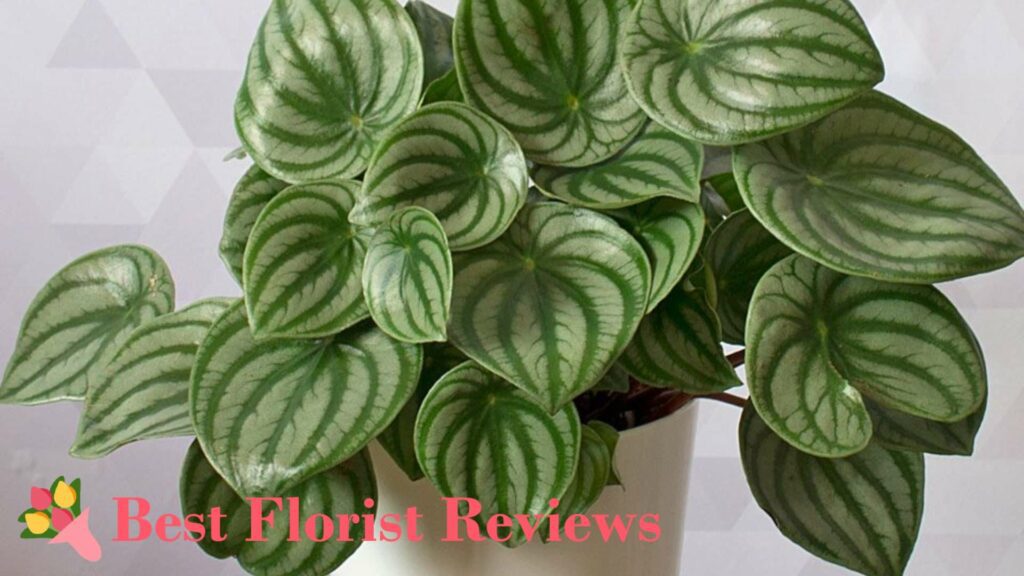

The ideal temperature range for watermelon peperomia is 18°C to 27°C. They’re sensitive to extreme heat and cold, so avoid placing them in rooms with temperatures going higher than 35°C and lower than 10°C.
They also prefer a slightly humid environment, so always keep the room’s humidity at the 50% to 70% range.
Using a humidifier and occasional misting can help you meet the humidity requirements of watermelon peperomia. Placing a bowl of water near the plant will also help increase humidity level around it.
Fertilizing


Watermelon peperomia doesn’t need frequent feeding. Fertilizing them every 4 to 6 weeks during summer and spring should be enough to keep them healthy.
During summer and spring, the plant is actively growing and will benefit most from added nutrients.
It’s best to use a balanced liquid or slow-release granular fertilizer. It’s also ideal to use organic fertilizers over synthetic ones.
However, if you only have synthetic fertilizers, make sure to flush the soil every 3 months by thoroughly watering the plant with plain water. Flushing the soil helps leach out excess salts and avoid salt buildup.
We highly advise diluting the fertilizer to half the recommended strength to avoid overfeeding. Too much fertilizer can cause root damage and stress on your lovely watermelon peperomia.
During the fall and winter months, it goes into a semi-dormant phase, so it won’t need much feeding. It’s best to reduce or stop fertilizing during this period.
Pruning
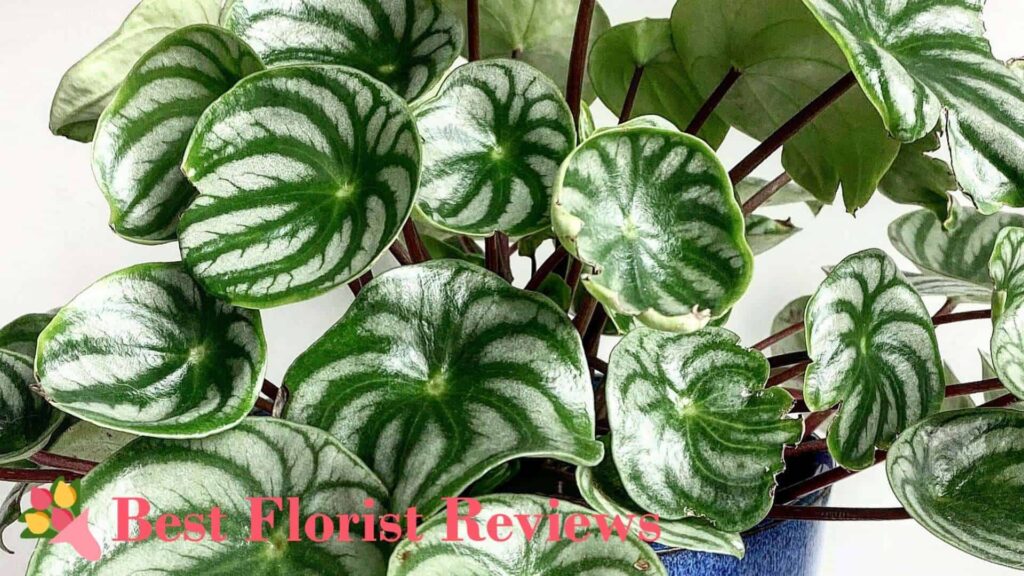

Watermelon peperomia are slow growers and are relatively small, so pruning is not really needed. However, you can trim them a little when the stems are getting leggy or when you notice overcrowding in certain parts.
It’s best to prune them right before the growing season to encourage bushier growth. Avoid pruning during the fall and winter, as the plant’s growth significantly slows down during these seasons.
When pruning, always make clean cuts just above a leaf node, the point where a leaf meets the stem. This will encourage new growth to emerge from that node.
How do you successfully propagate watermelon peperomia?
Watermelon peperomia is easy to propagate, and there are various methods that you can use.
Propagate watermelon peperomia by separating the roots
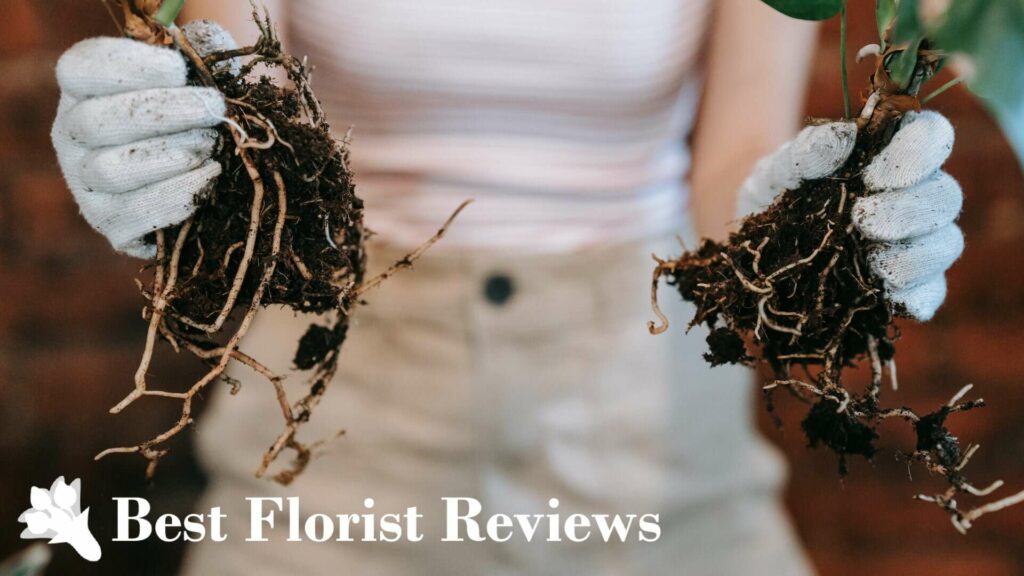

Propagating by division or by separating the roots can be done when the watermelon peperomia is mature and has a lot of established roots.
Step 1: Remove the entire plant from the pot and gently shake off excess soil to expose the root system. This will help you get a better view of the roots and allow you to identify their natural division.
Step 2: Inspect the roots for any signs of damage, disease, or pests. If you notice any unhealthy roots, trim them off with clean scissors or a knife.
Step 3: Divide the plants into smaller sections by making use of their natural division or cutting them apart using clean, sharp scissors. Make sure that each section has a root, a stem, and a leaf to make the propagation successful.
Step 4: Carefully plant each divided section into its own respective pot. Gently pack the soil around the roots to secure the plant in place.
We suggest planting them in their permanent pot to avoid possible stress that repotting can cause.
Step 5: Provide them with the same environment and care a mature watermelon peperomia will need.
Propagate watermelon peperomia by cutting a leaf
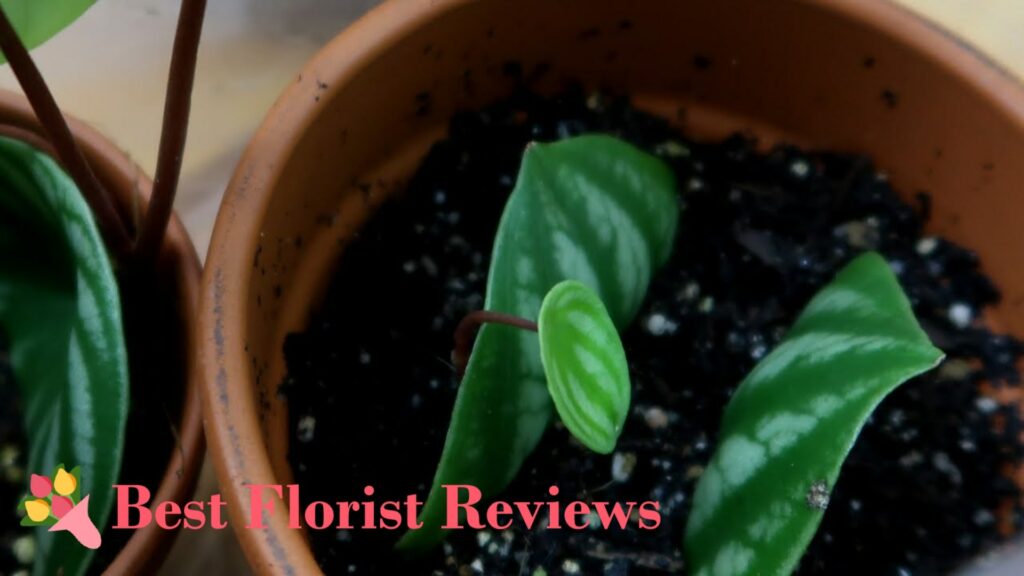

Step 1: Choose a healthy and mature leaf from your watermelon peperomia. The larger the leaves, the better.
Step 2: Using sharp and clean scissors or a knife, carefully cut a leaf of your choice into two. Cut across the patterns instead of following them to get better results.
We recommend propagating multiple leaf cuttings at once to increase the chances of success.
Step 3: Plant the leaf cuttings in a new pot with the cut end buried into the soil. You can place multiple cuttings in the same pot but ensure that there’s at least half an inch of distance between them.
Step 4: Cover the pot with a clear plastic bag to create a greenhouse-like environment for the cuttings. This will help them produce healthier roots.
Make a few holes into the bag to let air flow into the cuttings.
Step 5: Ensure that the humidity level around the pot is high. You can do this by placing a bowl of water next to it or misting the leaves every now and then.
Propagate watermelon peperomia by cutting a stem
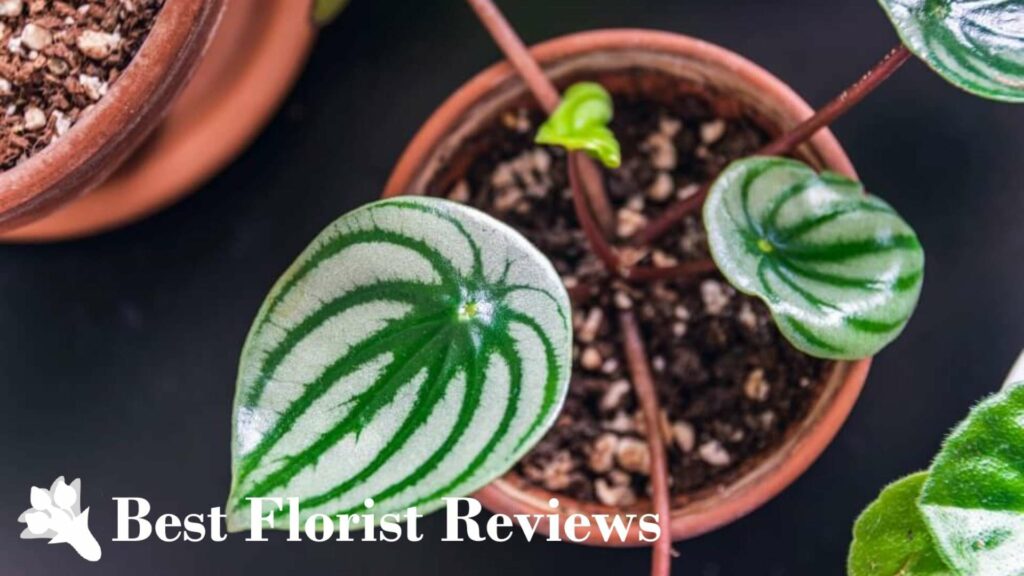

Step 1: Look for a stem that is not too woody and has a few leaves on it. Avoid stems that are overly long or too leggy.
Step 2: Cut the leaf from the plant using sharp and clean scissors. Ensure that you have a clean cut that includes about 2 to 3 inches of the petiole or the leaf’s stem.
The petiole is the stalk-like structure that connects the leaf to the stem. It’s important that the cutting has this if you want a successful propagation, as it will help produce new roots.
Step 3: Place the cutting in a container with water. Ensure that the water reaches only the petiole and not the leaf, as the water may cause the leaves to decay.
Step 4: Regularly change the water until new roots emerge to avoid any harmful bacteria from causing damage to the cuttings.
It’s also important to be careful when changing the water, as you may damage the new roots in the process.
This process may take a few weeks to a few months. We suggest putting multiple cuttings in the same container, as we’ve seen a much faster growth rate in the roots when we do this.
Step 5: Plant the cuttings in a new pot once you see at least 2 inches of roots.
When to repot watermelon peperomia?
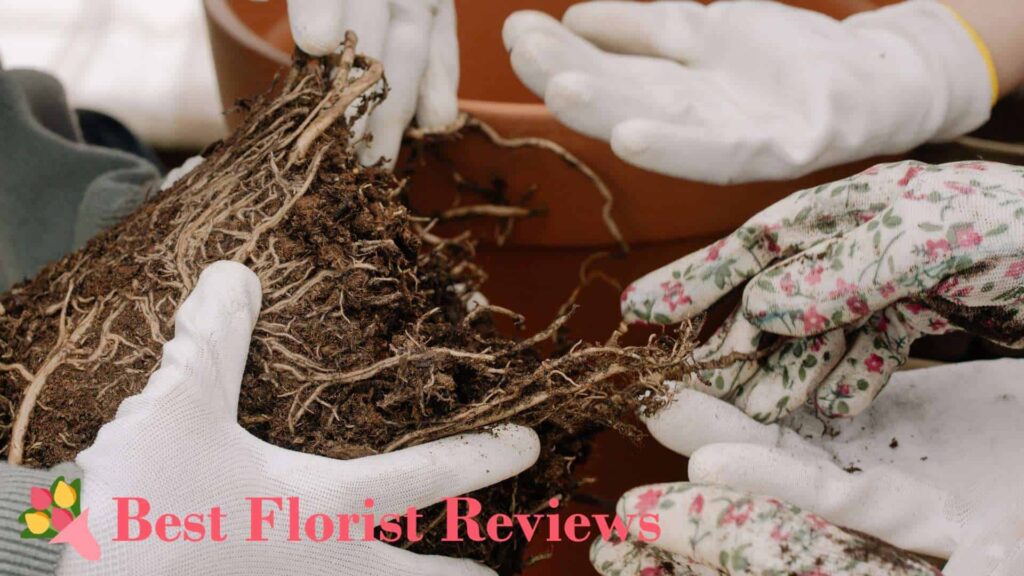

Watermelon peperomia likes its roots to be slightly packed and entwined, so you won’t have to repot them as much as other houseplants.
That said, you will still need to repot it when the roots have outgrown the pot. One good indication that the plant needs repotting is when you notice some roots growing through the drainage holes or when they’re becoming visible on the soil’s surface.
If you also notice that your watermelon peperomia is growing significantly slower, then there may not be enough room for the roots to grow, and you need to transfer it to a bigger pot.
In general, it will take at least two years before the watermelon peperomia will need to be repotted. But it’s still crucial to observe the roots’ condition before repotting.
It’s best to repot the plant during summer and spring, as they’re actively growing during these seasons. They may find it hard to recover if you plant them during their dormant seasons.
Common Problems with Watermelon Peperomia
Pests
Watermelon peperomia, just like other houseplants, may suffer from pest infestation. Some common pests you’ll find in them are mealybugs, fungus gnats, and scales.
Mealybugs
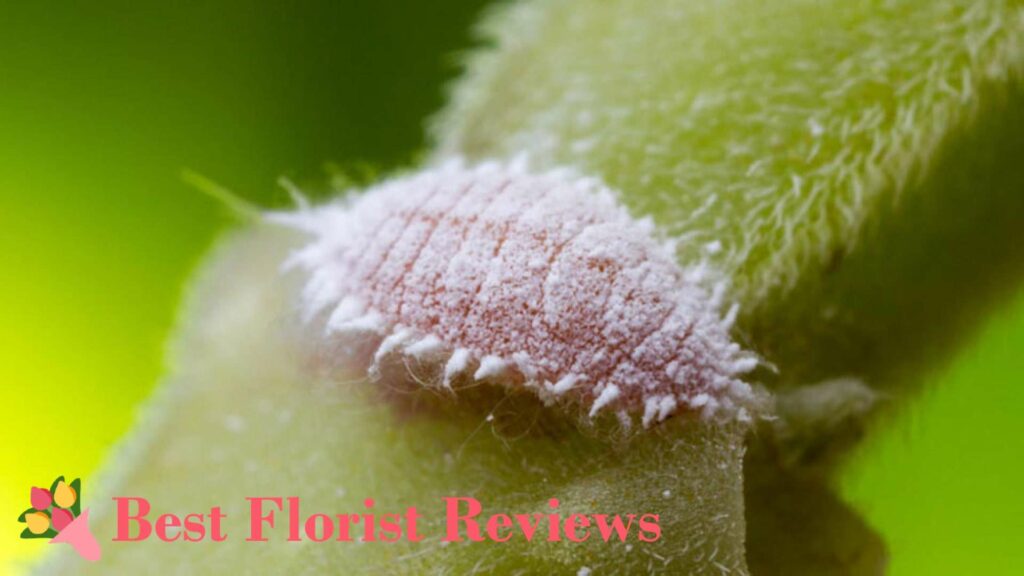

Mealybugs feed on the plant’s sap, which weakens the plant and leads to wilting, leaf drop, and even plant death in severe cases.
When you notice small, oval-shaped insects with white or grayish coatings on the underside of the leaves or along the stems of your watermelon peperomia, then that means your plant is already infested with mealybugs.
Treatment: Remove them using a cotton swab dipped in rubbing alcohol. If the infestation is already severe, spray the mealybugs with insecticidal soap.
Fungus Gnats
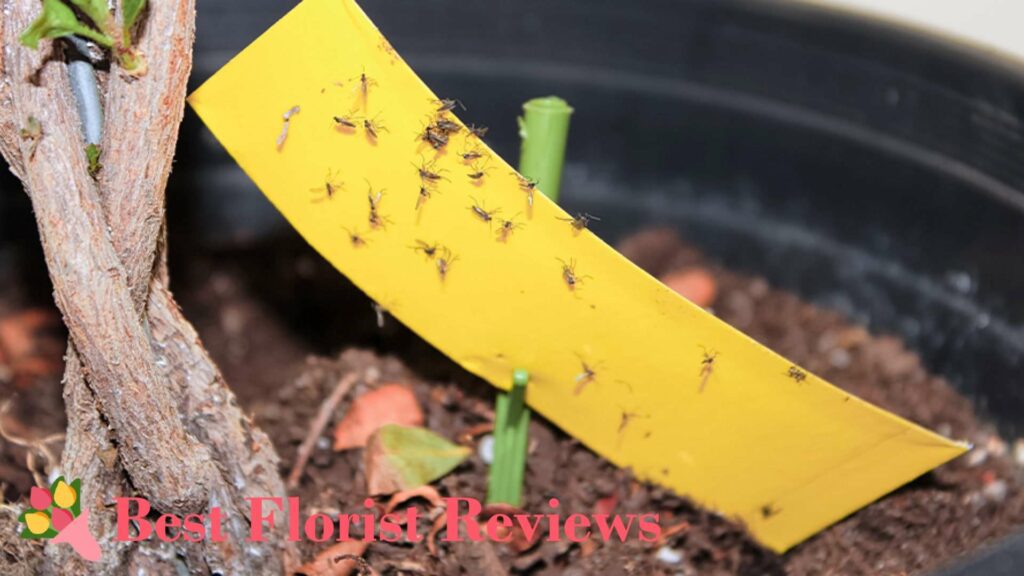

Fungus gnats are small, mosquito-like insects that are common among houseplants. They don’t directly hurt mature watermelon peperomia, but their larvae can cause damage to the plant roots and affect their growth and health.
They also make the watermelon peperomia less aesthetically pleasing. Plus, they can be really irritating when they fly around the house.
Treatment: One effective way to get rid of fungus gnats is by attaching sticky traps to the plants. They attract the fungus gnats and trap them once they land on them, effectively keeping them away from the plant’s leaves.
We also advise applying nematodes to the soil. Nematodes are natural predators of fungus gnats larvae, so they can greatly help in getting rid of fungus gnats larvae.
Scales
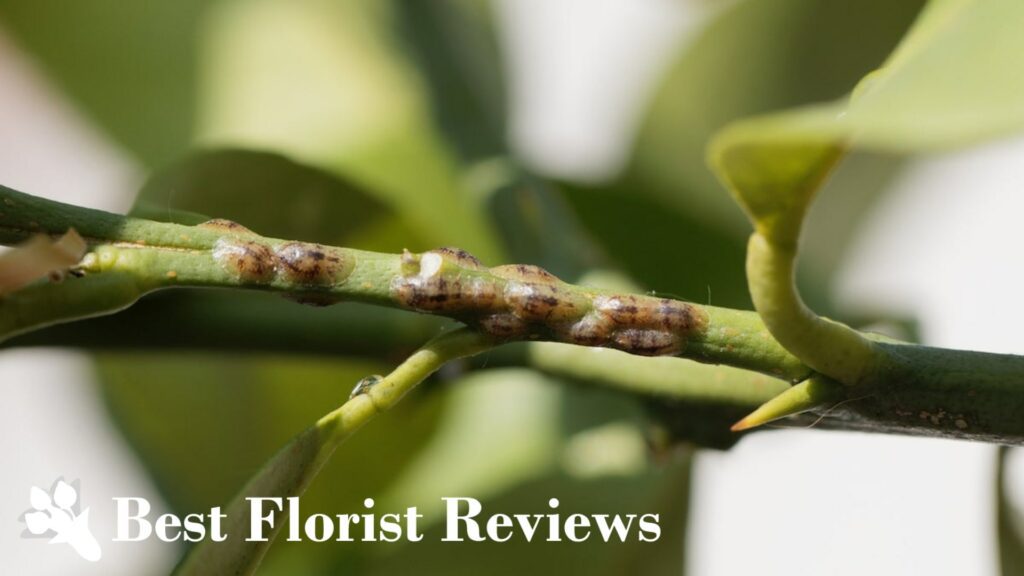

Like mealybugs, scales are sap-sucking insects that can damage the watermelon peperomia. They attach themselves to the stems and leaves of the plant and then stick their needle-like mouth to the plant to suck sap.
You’ll know that your plant is infested by scales when you see tiny, oval-shaped insects latched on it. Depending on the species, they can be brown, black, white, or green.
In some cases, they may appear like stem bumps, so they may be easy to miss.
Treatment: When you notice them on your watermelon peperomia, it’s best to remove the parts that are severely infested. You may also use insecticidal soap for parts that aren’t extremely damaged yet.
For parts with minimal infestation, you can remove the scales using a cotton swab that’s been dipped in rubbing alcohol.
Drooping Leaves


Most often than not, drooping leaves are caused by underwatering. The plant is not getting enough moisture to perform essential processes like photosynthesis, causing the plant to droop.
Check the soil if it’s dry, and thoroughly water areas that are completely dry. Maintaining a good watering schedule will help the plants to recover.
If you notice that the plant needs frequent watering, adding coco coir into the soil can help it retain more moisture.
That said, there are rare instances when this is caused by overwatering. If the soil is still moist, the roots are probably rotting from too much moisture, and the plant is unable to uptake nutrients, causing it to droop.
Look out for other indications like yellowing leaves and root discoloration to ensure that the problem is root rot. Once you’re certain, dig up the plant and remove the damaged roots.
Curling Leaves
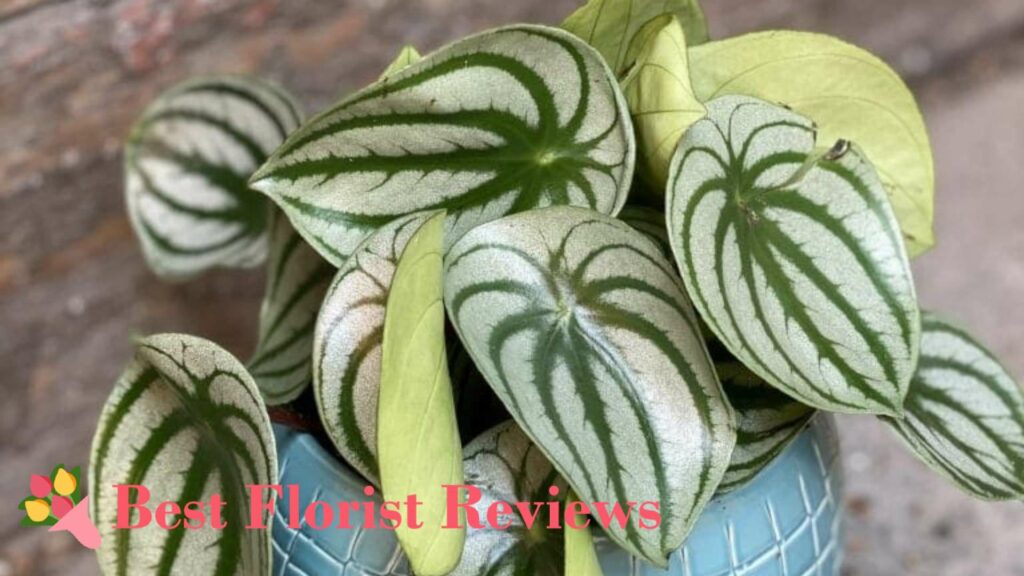

Underwatering, nutrient deficiency, improper lighting, and pest infestation can all cause curling leaves on watermelon peperomia.
When the plant is not receiving enough water, your watermelon peperomia may curl its leaves to preserve the little amount of water it has. If it’s not addressed immediately, it may cause the leaves to wilt and drop.
Watermelon peperomia also curl their leaves when they’re suffering from nutrient deficiency. This commonly happens when there’s a lack of magnesium, phosphorus, nitrogen, and potassium in the soil.
You can address this by adding organic matter to the soil or applying fertilizer.
When the plant is exposed to direct sunlight for a long time, the sunlight will likely burn its leaves, and the plant may respond by curling them. They’ll also curl their leaves when they don’t receive sufficient light, as they’re unable to photosynthesize.
The damage caused by pests like mealybugs and scales will also cause the leaves to curl and eventually die. Hence, it’s important that you immediately treat the plant when it gets infested.
Discoloration on the Leaves
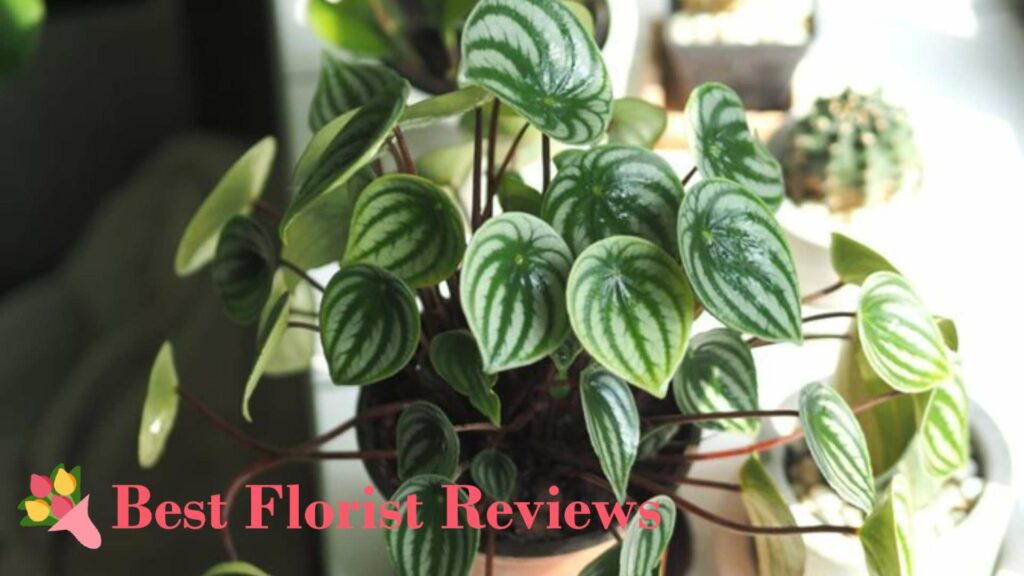

Discoloration on the watermelon peperomia’s leaves can be caused by various things, including overwatering, environmental stress, pest infestation, and lack of humidity.
Yellowing leaves are usually easier to diagnose, as it’s mostly caused by overwatering or improper soil mix. When the soil receives too much moisture, the roots will likely rot and hinder the plant’s ability to uptake nutrients, causing the leaves to turn yellow.
When the leaves are turning brown, it can be a bit hard to pinpoint the actual cause as there are a lot of things that may cause this.
First, brown leaves may be caused by environmental stress. If you move the plant to a different location, it may have a hard time adjusting to its new environment.
If this is the cause, all you really can do is provide it with the utmost care until it’s well-adjusted to the new room. Prune off the leaves that have turned brown to maintain a healthy appearance for the plant.
The second possible cause is the lack of humidity. Watermelon peperomia prefers a humid environment, so if there’s a lack of humidity in the air, some leaves may die and turn brown.
Another possible reason is pest infestation. When the pests are causing too much damage to the leaves, they’ll wilt and turn brown.



